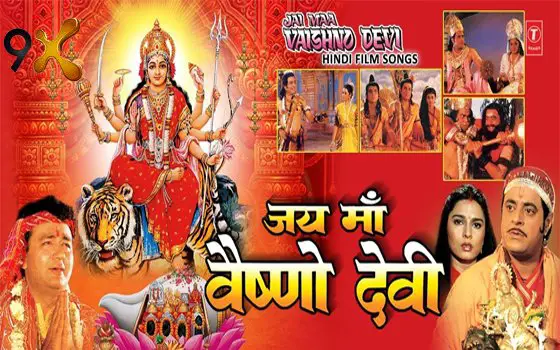

Some of the audience entered the theatre barefoot, as in a Hindu temple, and small shrines and temples dedicated to the Goddess, started springing up all over North India. The screenings of the film were accompanied by religious rituals by the audience. The 1975 film Jai Santoshi Maa elevated Santoshi Mata, a little-known "new" Goddess to the pan-Indian Hindu pantheon. The film portrayed the Goddess to be the daughter of the popular Hindu god Ganesha and related her to the Raksha Bandhan festival, however, it had no basis in Hindu scriptures. With the rising popularity of the film, Santoshi Mata entered the pan-Indian Hindu pantheon and her images and shrines were incorporated in Hindu temples. However, it was the 1975 Bollywood film Jai Santoshi Maa ("Hail to Santoshi Maa")-narrating the story of the Goddess and her ardent devotee Satyavati-which propelled this then little-known "new" Goddess to the heights of devotional fervour. Her vrata was gaining popularity with North Indian women. Her prayer initially spread through word of mouth, vrata-pamphlet literature, and poster art. Santoshi Mata emerged as a Goddess in the early 1960s. A vrata (ritual fast) called the Santoshi Maa vrata performed by women on 16 consecutive Fridays wins the Goddess' favour. Santoshi Mata is particularly worshipped by women of North India. She is venerated as "the Mother of Satisfaction", the meaning of her name. Santoshi Mata ( Hindi: संतोषी माता) or Santoshi Maa ( संतोषी माँ) is a Goddess in the Hindu folklore. Sword, golden pot of rice and Trishula (trident)

Om shri santoshi mahamaye gajanandam dayini shukravar priye devi narayani namostute


 0 kommentar(er)
0 kommentar(er)
